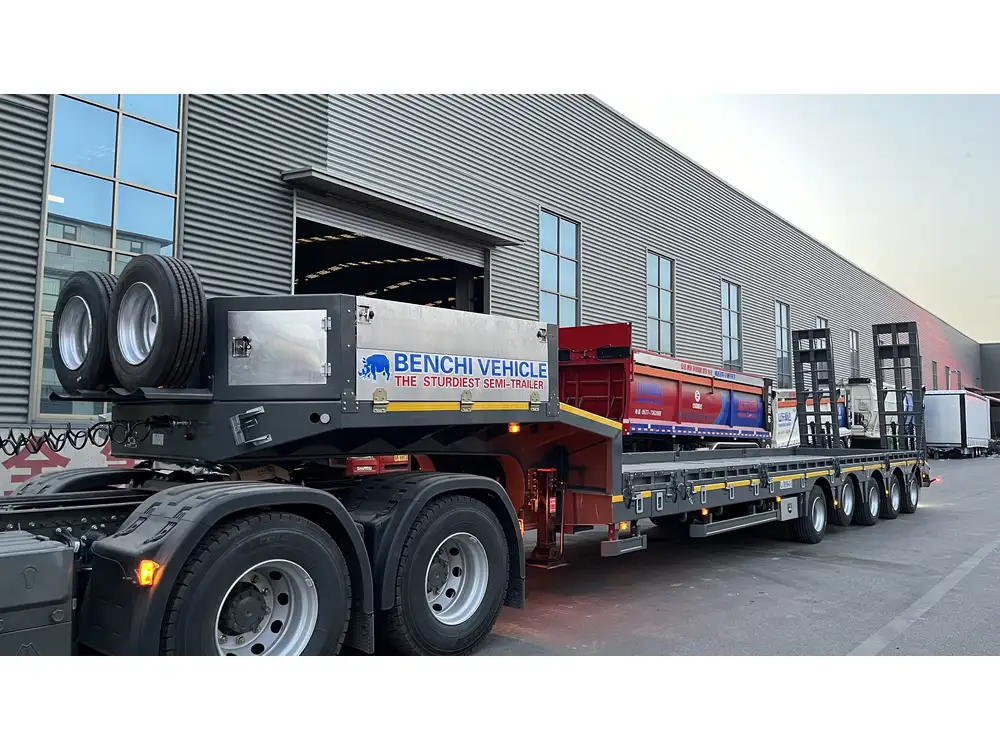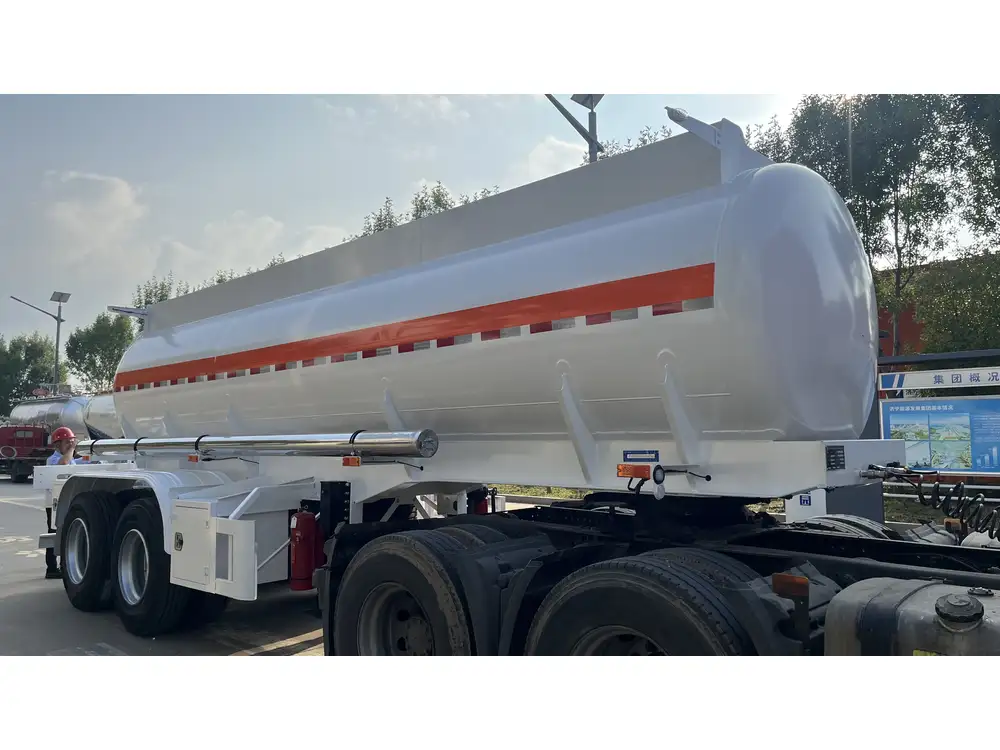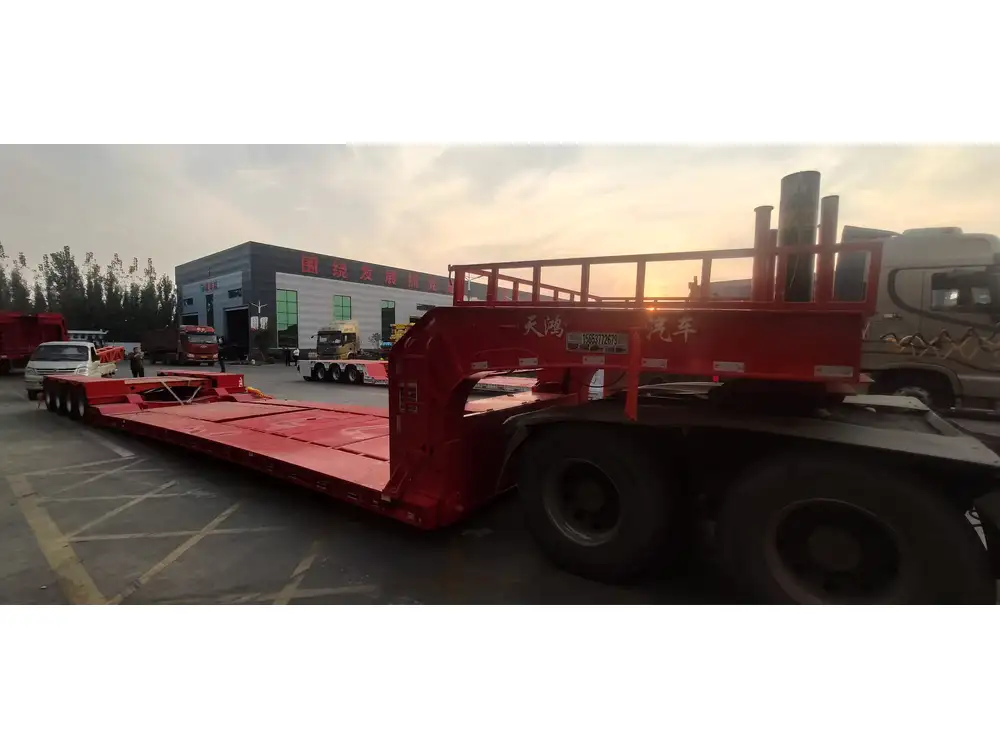When it comes to the logistics and transportation industry, semi trailers play a pivotal role in ensuring goods are delivered efficiently and safely. As a manufacturer of semi trailers, we understand the importance of not only maintaining the structural integrity of the trailers but also enhancing their visual appeal. One effective method that has gained popularity among fleet operators and owner-operators alike is the wrapping of semi trailers. This article will delve into the nuances of wrapping a semi trailer, discussing methods, materials, benefits, and tips to ensure a flawless application.
Understanding the Concept of Trailer Wrapping
What is Trailer Wrapping?
Trailer wrapping involves applying a vinyl film to the exterior surface of a semi trailer. This process not only serves to protect the trailer from the elements, such as UV rays, rain, and grime, but also offers an excellent opportunity for branding and advertising. A well-wrapped trailer can become a mobile billboard, helping businesses enhance their visibility on the road.

Benefits of Wrapping a Semi Trailer
The advantages of wrapping a semi trailer are numerous:
| Benefit | Description |
|---|---|
| Protection | Vinyl wraps act as a protective layer, reducing wear from environmental factors. |
| Cost-Effective | Cheaper than a full paint job and easily replaceable when designs need updating. |
| Enhanced Branding | Opportunity to advertise your brand through visually striking designs. |
| Resale Value | Maintains and can even enhance resale value by preserving the original paint. |
| Variety of Designs | Unlimited design possibilities, allowing for creativity and customization. |
Materials Required for Trailer Wrapping
1. Vinyl Wrap
The primary material used in wrapping semi trailers is a high-quality vinyl wrap. It is essential to choose a wrap that is designed for vehicles, ensuring durability and flexibility. Some key options include:
- Cast Vinyl: Offers exceptional durability and stretchability, ideal for complex curves and recesses found on trailers.
- Calendared Vinyl: Suitable for flat surfaces; while it is less expensive, it has a shorter lifespan and is not as effective for high-stretch areas.

2. Application Tools
To ensure a professional finish, several tools are required during the wrapping process:
- Squeegee: For smoothing the vinyl and eliminating bubbles.
- Heat Gun: Essential for softening the vinyl during application, allowing it to conform to the trailer’s shape.
- Utility Knife: Used for precise cutting of the vinyl wrap.
- Measuring Tape: Ensures accuracy in cutting and applying sections of the wrap.
Step-by-Step Process on How to Wrap a Semi Trailer
Step 1: Preparation of the Trailer

Clean the Surface
Before applying the vinyl, a thorough cleaning of the semi trailer’s surface is crucial. Use a combination of soap and water, and then rinse thoroughly. Follow up with isopropyl alcohol to eliminate any residues and ensure a strong bond between the vinyl and the trailer.
Inspect for Damage
Carefully inspect the trailer for any damages such as dents, rust, or surface flaws. Addressing these issues before wrapping is essential, as they can affect the longevity and appearance of the wrap.
Step 2: Measurement and Cutting

Accurate Measurements
Using a measuring tape, accurately measure the dimensions of the surfaces being wrapped. This step is critical to avoid waste and ensure the vinyl fits correctly.
Cutting the Vinyl
Once measurements are noted, cut the vinyl into manageable pieces, allowing for an extra inch or two around the edges to facilitate an easier application.
Step 3: Application of the Vinyl

Start from the Top
Begin applying the wrap from the top section of the trailer. This method helps prevent dirt and moisture from getting trapped under the vinyl. Carefully align the top edge with the desired position before slowly adhering the vinyl downwards.
Squeegee Technique
As you gradually unroll the vinyl, use a squeegee to smooth out the wrap, working from the center outward. This technique helps eliminate air pockets and ensures a smooth finish.
Use Heat as Needed
If you encounter areas with complex curves or contours, use a heat gun to gently warm the vinyl. This process makes the vinyl more pliable and enables it to conform better to the trailer’s surface.

Step 4: Edge Sealing
After applying the vinyl, ensure all edges are sealed properly. This step is vital to prevent lifting and ensures longevity. For added precaution, consider using a heat gun to further secure the edges.
Step 5: Final Inspection
Conduct a thorough inspection of the wrapped trailer to ensure the application is flawless. Check for any bubbles, misalignments, or areas where the vinyl might have lifted. Make necessary adjustments or repairs at this stage.
Maintenance Tips for Wrapped Semi Trailers

1. Regular Cleaning
To keep the wrap looking fresh and vibrant, regular cleaning is recommended. Use a mild detergent, soft sponge, and water to gently clean the surface. Avoid harsh chemicals that can degrade the vinyl.
2. Avoid High-Pressure Washes
While it may be tempting to use a high-pressure washer to clean the trailer, this can lead to edge lifting of the wrap. Opt for low-pressure washing techniques for a safe clean.
3. Inspect Periodically
Regularly inspect the wrap for signs of wear and tear, especially during routine maintenance checks. Addressing any issues early can greatly extend the lifespan of the vinyl.

Common Questions About Semi Trailer Wrapping
1. How long does a semi trailer wrap last?
With proper care, a high-quality vinyl wrap can last anywhere from 3 to 7 years. Factors affecting longevity include exposure to UV rays, environmental conditions, and maintenance practices.
2. Can I wrap over existing graphics?
In some cases, it is possible to wrap over existing graphics, provided they are smooth and in good condition. However, for the best results, it is advisable to remove old decals before starting the wrap process.

3. Is it possible to remove the wrap later?
Yes, one of the significant advantages of wrapping is that it can be removed without damaging the original paint underneath. When handled correctly, the removal process leaves the trailer’s surface intact.
4. What if my trailer has a textured surface?
Vinyl wraps adhere best to smooth surfaces. If your trailer has a textured surface, you may need to consider a different method, such as custom printing or painting, to achieve a similar level of coverage.
Conclusion: Elevate Your Semi Trailer with Wrapping
Wrapping a semi trailer is a worthwhile investment that goes beyond mere aesthetics—it’s about ensuring long-term protection and enhancing your brand’s visibility on the road. By following the outlined steps for measurement, application, and maintenance, you can achieve a professional-looking wrap that stands the test of time.
In today’s competitive marketplace, innovative advertising methods are key to growth, and wrapping your semi trailer not only fulfills this need but also makes a statement about your business. If you’re considering wrapping your semi trailer, prioritize using high-quality materials and tools, adhere to best practices, and maintain the wrap properly to maximize your investment.
By understanding the intricacies of trailer wrapping, you position your fleet to not only look good but also perform efficiently, driving home the message that quality is at the forefront of your operations. Choose to wrap, and transform your semi trailers into dynamic promotional tools that generate visibility and convey your brand’s professionalism every mile of the journey.



